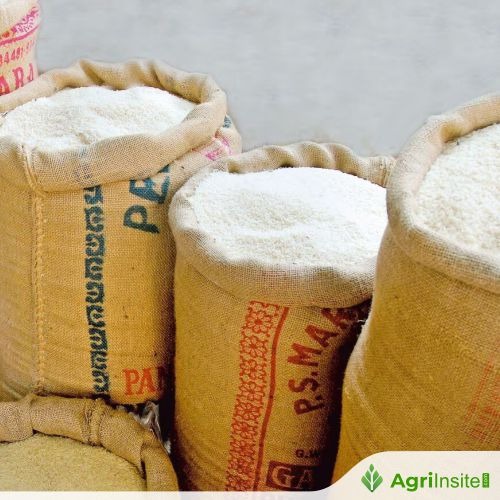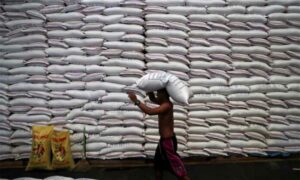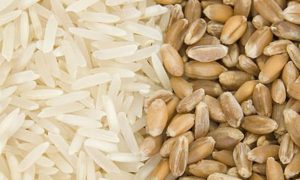India’s Rice Price Plunge: A Strategic Buying Opportunity in Global Agri-Commodities

India’s rice market presents a rare investment opportunity amid surplus stocks, weak rupee, and strong export demand. Prices are at multi-year lows, boosting global competitiveness. Despite monsoon and geopolitical risks, rising exports and undervalued agri-ETFs offer potential gains. Strategic investments in rice futures and ETFs could yield solid long-term returns.
India’s rice market is at a pivotal inflection point. A confluence of record surpluses, a depreciating rupee, and aggressive export policies has driven global rice prices to multi-year lows, creating a contrarian opportunity for investors in agri-commodities. While mainstream markets fixate on equities and tech stocks, the oversold Asian rice sector—particularly India’s—offers a compelling case for long-term positioning in rice futures and agricultural ETFs.
The Perfect Storm: Weak Rupee, Surplus Supply, and Competitive Pricing
India’s rice exports in Q2 2025 hit a record 24 million metric tons (MMT), a 25% surge from the previous year. This was fueled by a 40% surplus in government warehouses (63.09 MMT as of April 2025) and a rupee that has depreciated 4.34% against the dollar over the past year. The weaker rupee has amplified India’s pricing advantage, with non-basmati rice now selling at $12 per hundredweight—its lowest level since 2020. Thai jasmine rice, a traditional rival, now trades at a 25% premium to Indian basmati, further cementing India’s dominance.
The Indian rupee’s depreciation has been a double-edged sword. While it boosts export competitiveness, it also raises input costs for fertilizers and machinery, squeezing margins for domestic producers. However, for global buyers, Indian rice has become a no-brainer. Countries like the Philippines, Indonesia, and Saudi Arabia are snapping up discounted supplies, while African nations are increasingly reliant on India for affordable staples.
Ask Aime: Is the Indian rice market the perfect contrarian play in commodities?
Contrarian Case for Long Rice Futures and Agri-ETFs
The global rice market is in a bearish rut, with prices trading below cost curves for many producers. This oversold condition, coupled with India’s structural advantages, presents a buying opportunity for investors. Rice futures on the ICE Futures US market have fallen to $12.50 per hundredweight, a 30% drop from 2023 highs. For a commodity with inelastic demand and a critical role in global food security, this represents a historically cheap entry point.
Global Agriculture Producers ETF (COW) are also undervalued, trading at multi-year lows. These funds offer diversified exposure to rice, wheat, and other staples, with India’s rice exports forming a significant portion of their underlying assets.
Risks to Monitor: Monsoon Volatility and Geopolitical Dynamics
The primary risk lies in monsoon variability. While the 2025 monsoon is forecasted to deliver 106% of the long-period average (LPA), excessive or uneven rainfall could damage crops and disrupt sowing. A delayed or deficient monsoon in 2026 could trigger a supply shock, but for now, the weather outlook remains favorable.
Ask Aime: Should I invest in foreign rice stocks now?
Geopolitical tensions also pose a threat. The U.S. imposed a 25% tariff on Indian rice in August 2025, raising costs for U.S. importers and shifting demand to Pakistan and Vietnam. However, India’s pricing edge remains intact, and the U.S. market is a secondary destination for Indian basmati rice. West Asia and Africa—markets less sensitive to tariffs—continue to absorb the bulk of India’s exports.
Another wildcard is the Israel-Iran conflict, which has stranded 100,000 tonnes of Indian basmati rice at ports like Kandla and Mundra. While this creates short-term logistical pain, it also highlights the fragility of global supply chains and the need for India to diversify its export routes.
Strategic Entry Points and Hedging Considerations
For investors, the key is to balance the bullish case for rice with hedging against rupee depreciation. Long rice futures can be paired with short USD/INR positions to offset currency risks. Alternatively, agri-ETFs with exposure to India’s rice sector (e.g., CROP) offer a more diversified approach.
The Indian government’s Minimum Support Price (MSP) policy and irrigation investments also provide a floor for domestic production, ensuring supply resilience. Meanwhile, the global rice market remains oversupplied, with inventories at 743 million tons—well above demand—creating a structural tailwind for India’s export-driven model.
Conclusion: A Contrarian Play on Global Food Security
India’s rice price plunge is not a temporary blip but a structural shift in global agri-commodities. For investors willing to look beyond the noise of geopolitical tensions and monsoon risks, the current oversold conditions present a rare opportunity to position for long-term gains. As the world grapples with food inflation and supply chain disruptions, India’s rice exports—backed by a weak rupee and surplus supply—offer a compelling case for contrarian investing.
Investment Recommendation:
– Long ICE Futures US Rice (RICE) at current levels, with a target of $15 per hundredweight by Q1 2026.
– Buy Invesco Agriculture ETF (CROP) at a 20% discount to its 5-year average P/E.
– Hedge USD/INR exposure via currency futures to mitigate rupee depreciation risks.
In a world where food security is the new gold standard, India’s rice is the overlooked asset class waiting to be rediscovered.
To Read more about Rice News continue reading Agriinsite.com
Source : AInvest














